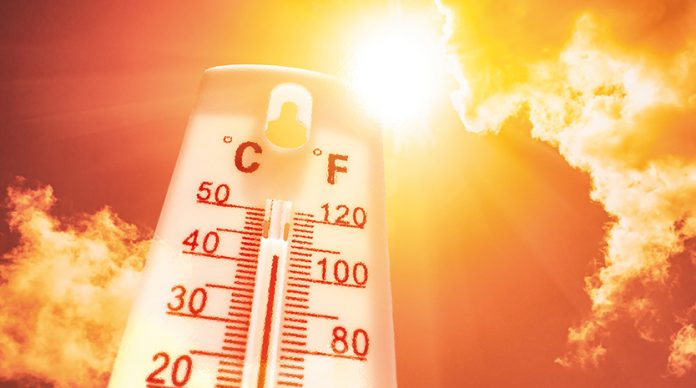When President Trump and Greta Thunberg took verbal shots at each other at this year’s Davos Economic Forum, climate change was again pushed to the front of the news cycle.
But while high-profile protestors and politicians argue, an ever-growing body of research confirms that world is getting warmer and weather patterns are becoming more severe as a result.
The world is getting warmer
2019 was the second-hottest year on record globally, according to NASA’s Goddard Institute for Space Studies (GISS), topped only by temperatures in 2016.
“The decade that just ended is clearly the warmest decade on record” explained GISS Director Gavin Schmidt when announcing the 2019 figures. “Every decade since the 1960s clearly has been warmer than the one before”.
Scientists are in agreement that the world is warming and the 2015 Paris Agreement suggests that politicians concur. So, if the world is warming, what does this mean for our water supplies?
How does a warmer earth affect our water?
Should temperatures continue to rise, the world would inevitably become drier, which would impact on fresh water supplies.
Warmer air holds more moisture than colder air (up to 7% per degree of warming according to the Clausius-Clapeyron equation), meaning as temperatures rise, more water is taken from the earth’s surface by evaporation.
Greater evaporation rates would negatively affect water stocks in reservoirs, leading to more incidences like Day Zero in Cape Town, where the city was at real risk of completely running out of water.
As well as from bodies of water, moisture is also taken from the ground, so greater evaporation would contribute to drier, more arid ground conditions. In turn, this would likely increase the demand for water from industries that rely on the ground to operate, specifically agriculture.
What goes up must come down
Additional moisture in the atmosphere will increase the volume and consistency of rainfall events, which already pose a challenge to water networks.
In the UK, increased rainfall is already being recorded. The 2018 UK State of the Climate Report found that the last decade (2009-2018) was on average 1% wetter than 1991-2010 and 5% wetter than 1961-1990.
Furthermore, the amount of rain recorded on extremely wet days has increased by 17% over the same time period.
The challenges posed by wetter weather
The most obvious risk of consistently wetter weather is that of flooding, and in 2018 the Environment Agency warned that intense bouts of flooding are set to become more frequent.
In fact, Met Office records show that since 1910 there has been 17 record-breaking rainfall months – with 9 of the 17 being post 2000.
In 2015, storms Desmond, Eva and Frank, and the resulting flooding, caused approximately £1.6bn worth of damage in the UK. And more recently, Yorkshire experienced what was described as ‘biblical’ flooding after parts of the UK were bombarded with a month’s worth of rain in 24 hours.
Flood water is quickly contaminated with pesticides and a variety of other pollutants, bringing additional challenges to an already stretched water network.
Can we be at risk of water shortages and flooding at the same time?
While this seems counterintuitive, global warming and inconsistent rainfall patterns increase the risk of both clean water supply deficits and flooding in the future.
As rainfall gets heavier, larger quantities of water are pushed downstream more quickly, avoiding capture. Additional issues such as less prolonged periods of rain and warmer, drier summers affects the consistency of water flow also.
Water companies in the UK, and internationally, understand the threats to their networks and are investing heavily in infrastructure to meet the challenges posed by climate change.
Effective leak detection, provided by advanced products such as PermaNET SU, is helping to dramatically reduce water loss, supporting ambitious leak reduction targets and ensuring a consistent supply to customers.
To combat flooding, products like SonicSens 3 are helping to ensure the efficiency of sewer networks, identifying signs of blockages and ensuring a consistent flow, especially during high demand.
By increasing investment in network monitoring solutions, water companies are taking important steps to ensure their networks are robust in the face of the challenges and demand increases brought by global warming.
www.hwmglobal.com



